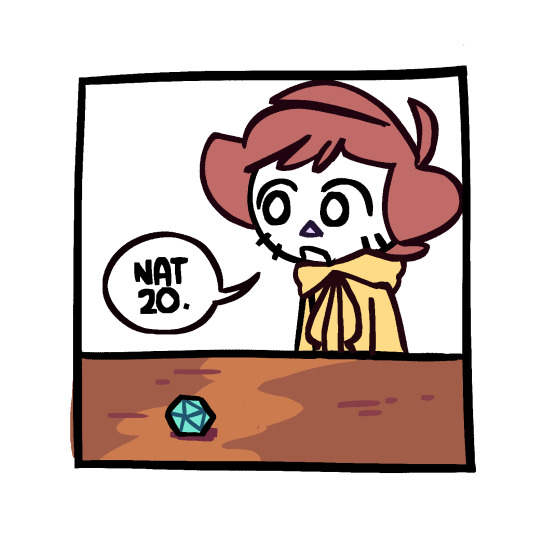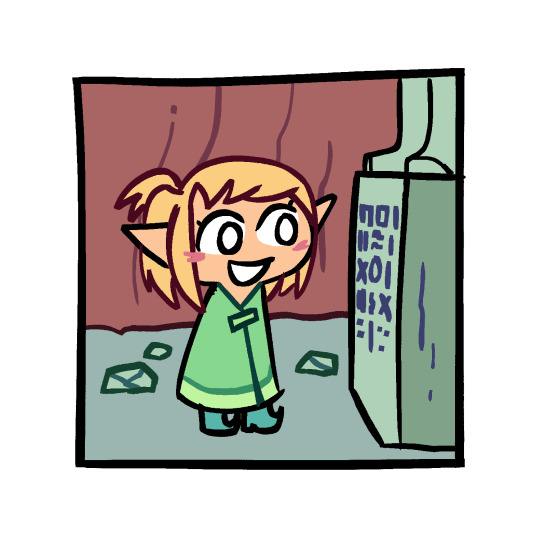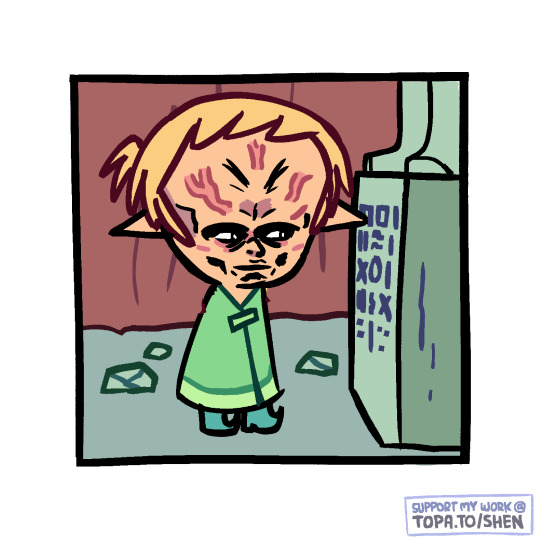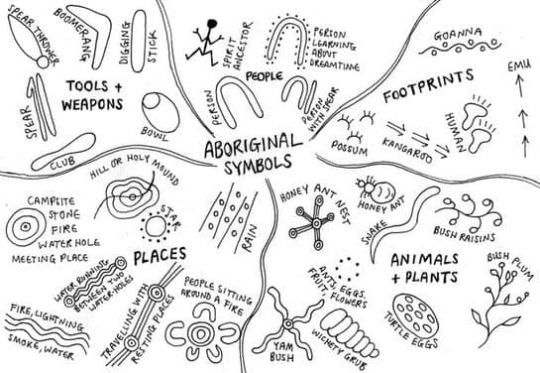#multiple intelligences
Explore tagged Tumblr posts
Text

“Guide to Mountains“ by | Kelvin Yuen
* * * *
Magic, then in its most primordial sense, is the experience of existing in a world made up of multiple intelligences, the intuition that every form that one perceives—from the swallow swooping overhead to the fly on a blade of grass, and indeed the blade of grass itself—is an experiencing form, an entity with its own predilections and sensations, albeit sensations that are different from our very own.
- David Abram
[alive on all channels]
#Kelvin yuen#magic#natural world#multiple intelligences#David Abram#alive on all channels#quotes#mountains
21 notes
·
View notes
Text
La théorie des intelligences multiples prouve que l'on a tous des compétences cachées qui ne demande qu'à être révélées!
Souvent les personnes intelligentes sont très créatives dans divers domaines
Il faut savoir que les intelligentes savent comment agir dans la plupart des situations









Most of the time, smart people are very creative
Most of the time, intelligent people are very creative
The theory of multiple intelligences proves that we all have hidden skills that just wait to be revealed
Most of the time the smarties are very creative
Most of the time the intelligents are very creative

#perso#enjoy small things#enjoy little things#petites choses#théorie des intelligences multiple#Souvent les personnes intelligentes sont très créatives dans divers domaines#Multiple intelligences#smart people#flowers#flower power#intelligent people#Il faut savoir que les intelligentes savent comment agir dans la plupart des situations#Most of the time the smarties are very creative#Most of the time the intelligents are very creative
10 notes
·
View notes
Text
"#dnd really is like that", and that's part of the fun! It's a test of the player's / GM's understanding of writing, probability and holistics. In the narrative, the pc deciphered text, despite (I'm assuming) being able to read. In the meta-narrative, this was by pure chance and highly unlikely. How do you combine the two? Well, there are multiple kinds of Intelligence!

This graph is kinda old, so I don't know how much, if any, change has occurred. Here, we can assume the pc had to tap into Linguistic and Logical-mathematical forms of intelligence. How does the pc solve it? Maybe they don't? " This reminds me of when I last went to the markets. There was a 'locally sourced' old rusty witch's cauldron on sale. Some old woman looking at it said the recipe scratched on it was awful! 'two-steps left, one step down, one step forward then spread the oil around!' Wouldn't it be funny if we tried that recipe? I do love dancing! hehe!" The last statement being an example of the pc's stronger Bodily-kinaesthetic, spatial and musical intelligence. It's also a way to bypass the usual understanding of DnD's Wisdom stat being " How well do you apply the knowledge indicated by the intelligence stat." They don't. They remember the similar "pictures", because I don't think you can have INT or WIS stat at 0. But as far as how their brain is actually applying it, they're just shy of going onto an unrelated topic. So remember! There are multiple kinds of intelligence, it's a skill you can always improve!





24K notes
·
View notes
Text
Lines of Regenerative Intelligence: A Coherence-Based Framework for Human Development and Evolution | ChatGPT4o
[Download Full Document (PDF)] As humanity faces a global meta-crisis of meaning, health, ecological collapse, and institutional breakdown, a new model of development is needed — one that aligns the flourishing of individuals, cultures, and the planet through a common grammar of coherence. This white paper introduces a coherence-centered reframing of developmental intelligence, drawing together…
#ChatGPT#coherence intelligence#coherence-based education#complexity theory#consciousness development#developmental lines#ecological intelligence#embodied intelligence#ethical intelligence#evolutionary love#fascia#Homo amor#Integral Theory#Life-Value#multiple intelligences#narrative semiotics#Planetary Health#Regenerative Coherence#Regenerative Culture#spiritual development#symbolic modeling#systems integration#TATI grammar#Teleodynamics
0 notes
Text
youtube
Understanding and implementing multiple intelligences in early childhood education ensures that each child receives a personalized learning experience that aligns with their strengths.
Howard Gardner's Theory of Multiple Intelligences.
Click on the Link to Watch the Full Video!
#youtube#earlychildhood#earlyeducation#multiple intelligences#montessori teaching methods in india#montessorieducation#montessorimethods
0 notes
Text
Multiple Intelligence Theory: Helping Every Student Shine
Introduction
For decades, education has largely been predicated on the notion of a singular, standardized form of intelligence — one that is quantifiable through conventional tests and academic performance. However, the multiple intelligence theory challenges this rigid framework, proposing that intelligence is not monolithic but multifaceted. Pioneered by Howard Gardner, this revolutionary perspective broadens the understanding of human potential, emphasizing that every individual possesses unique cognitive strengths. It has profound implications for pedagogy, curriculum design, and the way society perceives intellectual capability.
Understanding Gardner’s Multiple Intelligences
The Gardner theory of intelligence emerged as a direct critique of traditional IQ assessments, which tend to privilege linguistic and logical-mathematical abilities. Gardner posited that intelligence is not a single entity but a collection of distinct modalities. Each person has a unique blend of these intelligences, and educational environments should cater to this diversity rather than enforce a uniform learning style.
Gardner originally identified seven core intelligences, later expanding to eight (and potentially more). These include:
Linguistic Intelligence — The ability to manipulate language effectively, found in poets, writers, and eloquent speakers.
Logical-Mathematical Intelligence — The aptitude for abstract reasoning, pattern recognition, and problem-solving, often seen in scientists and mathematicians.
Musical Intelligence — Sensitivity to sound patterns, rhythm, and tones, characteristic of musicians and composers.
Bodily-Kinesthetic Intelligence — Mastery of bodily movement and coordination, crucial for athletes, dancers, and artisans.
Spatial Intelligence — The capability to visualize and manipulate objects in space, evident in architects, artists, and engineers.
Interpersonal Intelligence — The skill of understanding and interacting effectively with others, fundamental for leaders, teachers, and counselors.
Intrapersonal Intelligence — A deep awareness of one’s emotions, thoughts, and motivations, seen in philosophers and psychologists.
Naturalistic Intelligence — The ability to discern patterns in nature and categorize the environment, a strength of biologists and conservationists.
By acknowledging these diverse intelligences, multiple intelligence theory creates a framework where every student has the potential to shine, provided they receive the appropriate guidance and resources tailored to their strengths.
The Role of Multiple Intelligence Theory in Modern Education
Traditional education tends to favor students with strong linguistic and logical-mathematical intelligence, often neglecting those whose strengths lie in other domains. This oversight results in disengaged learners who might flourish if alternative methodologies were embraced. A multiple intelligences chart can serve as a valuable tool for educators, helping them recognize individual learning styles and adapt their teaching strategies accordingly.
For instance, a student who struggles with textual learning might thrive through hands-on projects (bodily-kinesthetic intelligence) or visual aids (spatial intelligence). Likewise, musical intelligence can be leveraged to teach concepts through rhythm and melody. By integrating diverse instructional techniques, teachers can foster an inclusive classroom where every student receives a personalized learning experience.
Multiple Intelligence Test: A Key to Unlocking Potential
A multiple intelligence test can be instrumental in determining a student’s cognitive strengths. These assessments evaluate different intelligences, providing insight into how individuals process information most effectively. Such evaluations empower educators to tailor instruction to match a student’s innate proclivities, ensuring optimal engagement and comprehension.
Incorporating wordsmart software, an advanced tool designed to enhance personalized learning, can further augment this approach. By aligning educational content with a student’s dominant intelligences, technology-driven platforms like wordsmart facilitate a more effective and enjoyable learning journey.
Rethinking Assessment and Achievement
Traditional academic success is often measured by standardized test scores, yet these assessments fail to capture the breadth of human intelligence. Under the Gardner theory of intelligence, assessment should be diversified to reflect a student’s strengths beyond mere rote memorization and analytical reasoning.
Performance-based evaluations, portfolio assessments, and project-based learning can provide a more accurate representation of a student’s capabilities. For example, a spatially intelligent student might demonstrate comprehension through graphic design rather than an essay. Likewise, a musically inclined learner could compose a song encapsulating key historical events instead of writing a report. By redefining success in broader terms, education can become more equitable and holistic.
The Future of Education with Multiple Intelligence Theory
As we move toward an era where personalized learning is increasingly emphasized, the multiple intelligence theory is more relevant than ever. By fostering an educational ecosystem that accommodates various intelligences, we can cultivate well-rounded individuals equipped with the skills necessary for diverse career paths.
Institutions that integrate the multiple intelligences chart into their curriculum design will create classrooms where students are not forced into a one-size-fits-all mold but are encouraged to flourish in their own unique way. With resources like wordsmart software, educators can harness technology to refine and customize instruction, ensuring that every learner receives the guidance they need to excel.
Conclusion
The implications of the Gardner theory of intelligence extend beyond the classroom. Recognizing and valuing diverse intelligences fosters a society that appreciates various talents, from artistic creativity to analytical prowess. When education acknowledges and nurtures these distinctions, students who once felt marginalized can step into their potential with confidence.
By leveraging multiple intelligence tests, refining assessment strategies, and incorporating digital tools like wordsmart, educators can transform learning into an inclusive and dynamic experience. In doing so, they honor the true essence of intelligence — not as a rigid construct, but as a vibrant, multifaceted phenomenon that allows every student to shine.
0 notes
Text
* * * *
“Magic… in its perhaps most primordial sense, is the experience of existing in a world made up of multiple intelligences, the intuition that every form one perceives — from the swallow swooping overhead to the fly on a blade of grass, and indeed the blade of grass itself — is an experiencing form, an entity with its own predilections and sensations, albeit sensations that are very different from our own.”
David Abram
[alive on all channels]

Aboriginal symbols used in carving and painting
540 notes
·
View notes
Text
What is DMIT?
DMIT is a scientific analysis method that studies the unique patterns of ridges and lines found in our fingerprints. These patterns are linked to the brain's functioning and can reveal innate talents, intelligence types, and potential challenges we may face in life. Based on the concept of Multiple Intelligence Theory by Howard Gardner, DMIT categorizes intelligence into various types—logical, linguistic, musical, spatial, bodily-kinesthetic, interpersonal, intrapersonal, and naturalistic.
How Does DMIT Work?
DMIT is based on the study of dermatoglyphics, which refers to the ridges and lines on our fingers. These fingerprints are formed in the womb, and studies suggest that they are a reflection of the brain's neural development. By analyzing your fingerprint patterns, DMIT can identify which type of intelligence is most dominant in you. For example, if you have a higher logical intelligence, you may excel in mathematics, problem-solving, and logical reasoning.
Benefits of DMIT
Self-Discovery: DMIT helps you understand your strengths, weaknesses, and the way you learn best. It provides insights into your personality and emotional intelligence, which can aid in improving relationships and personal growth.
2. Career Guidance: DMIT is also a valuable tool for career counseling. By understanding your dominant intelligence types, you can pursue careers that align with your natural abilities. For example, if you're strong in interpersonal intelligence, you may excel in roles that require communication and people skills.
3. Academic Success: For students, DMIT can identify preferred learning styles and suggest effective study techniques tailored to their intelligence types. This customized approach can enhance academic performance and boost confidence.
4. Personalized Parenting: DMIT is also helpful for parents to understand their children's cognitive abilities and emotional needs. By knowing your child's intelligence profile, you can create a more nurturing and effective environment for their growth.
0 notes
Text

horses watching television in a carpeted room they are small and wear matching blue halters as they stand close together side by side incredibly close to the television which displays a horse and rider jumping over an obstacle typical of horse shows this pair is watching sports as friends practically glued to the screen they are obviously fanatics of a sport in which their taller brethren show off their strengths and discipline perhaps some part of them yearns to leap and bound with the big shots
#friendship#intelligence#small#multiple horses#indoors#horse#horses#horse pics#horseblr#horseposting#horse community#animal#animals#animal images#animal photos#animal pics#equine#equestrian#equid#reaction pics#reaction photos#reaction images#reaction image#reaction photo#meme#sports#show jumping#sports entertainment#television#horseimagebarn
3K notes
·
View notes
Text

Multiple Intelligences
Howard Gardner (b. 1943) is an American psychologist who, in 1983, published his theory of “Multiple Intelligences”. He proposed that there are different types of intelligence (ways that people can be smart) and that everyone is a unique combination of these intelligences. These are different from learning styles as intelligence is about what you’re good at, rather than how you like to learn. The eight intelligences Gardner identified are:
Bodily-kinaesthetic
Interpersonal
Verbal-linguistic
Logical-mathematical
Naturalistic
Intrapersonal
Visual-spatial
Musical
Bodily-kinaesthetic intelligence is about being physical and using your body. People who are ‘body smart’ often have great hand-eye coordination and motor control, and are therefore more talented at activities such as sports. They tend to learn better by doing things, rather than listening or watching.
Interpersonal intelligence relates to interaction with others and understanding people. Someone who is ‘people smart’ tends to have strong communication skills and can work effectively in groups. They are also skilled at understanding the needs and feelings of others.
Verbal-linguistic intelligence involves using and understanding language. ‘Word smart’ people typically have strong reading, writing and speaking skills, as well as a rich vocabulary. They are often talented in debating and public speaking, and can memorise information and explain things well.
Logical-mathematical intelligence refers to problem solving and reasoning. People who are ‘logic smart’ can think logically and are good with numbers. They have naturally good critical thinking and pattern recognition skills.
Naturalistic intelligence is about nature and the environment. A person who is ‘nature smart’ has a deep connection with and appreciation for the natural world. They tend to be more observant as they are more intune with the world around them.
Intrapersonal intelligence relates to the ability to understand and connect with your inner self. Someone who is ‘self-smart’ reflects on their experiences and beliefs, and can easily identify their strengths and weaknesses. They have a great sense of self-awareness and a strong desire for personal growth.
Visual-spatial intelligence involves working with the things you see and the space around you. ‘Picture smart’ people are able to understand and interpret information given to them visually. They have a keen eye for fine details and patterns, and are often skilled in art and design.
Musical intelligence refers to creativity and sound. People who are ‘music smart’ are good with patterns and structure, and are generally talented in creating and performing music. They are able to express themselves and communicate through sound as they often have a deep emotional connection to what they hear.
This theory can be applied to groups within a CLD context. For example, it can help identify students’ strengths, allowing practitioners to design more personalised activities and lessons. Acknowledging this diversity in individuals can help create a more inclusive environment. However, it is important to recognise the limitations of this theory. As everyone is a unique blend of these intelligences, it may be impractical to cater to everyone’s individual needs due to budget or time restraints. Gardner’s theory also only focuses on strengths and abilities, rather than areas that someone might need more help with.
0 notes
Text

Gigantic Jets over Himalayan Mountains: Yes, but can your thunderstorm do this? Pictured here are gigantic jets shooting up from a thunderstorm last week toward the Himalayan Mountains in China and Bhutan. The composite image captured four long jets that occurred only minutes apart. Gigantic jets, documented only in this century, are a type of lightning discharge that occurs between some thunderstorms and the Earth's ionosphere high above them. They are an unusual type of lightning that is much different from regular cloud-to-cloud and cloud-to-ground lightning. The bottoms of gigantic jets appear similar to a cloud-to-above strike called blue jets, while the tops appear similar to upper-atmosphere red sprites. Although the mechanism and trigger that cause gigantic jets remains a topic of research, it is clear that the jets reduce charge imbalance between different parts of Earth's atmosphere. A good way to look for gigantic jets is to watch a powerful but distant thunderstorm from a clear location. Image Credit & Copyright: Li Xuanhua
[Robert B. Hubbell Newsletter]
* * * *
“Magic… in its perhaps most primordial sense, is the experience of existing in a world made up of multiple intelligences, the intuition that every form one perceives — from the swallow swooping overhead to the fly on a blade of grass, and indeed the blade of grass itself — is an experiencing form, an entity with its own predilections and sensations, albeit sensations that are very different from our own.”
David Abram
[alive on all channels]
#Robert B.Hubbell#Gigantic Jets#Himalayan Mountains#China Bhutan#Earth's ionosphere#Li Xuanhua#magic#David Abram#alive on all channels#multiple intelligences#intuition#quotes
36 notes
·
View notes
Text
Unironically think that each of the bros (+April) don’t actually get how impressive their feats really are so they just do what they do and on the off chance someone comments on those feats they all react like:

#rottmnt#tmnt#rise of the teenage mutant ninja turtles#no but really#I love thinking that they’re actually way more prideful about the stuff that does not even hold a candle to their other feats#like yeah Mikey can open a hole in the space time continuum but that’s nothing have you TRIED his manicotti??#yeah Leo has outsmarted multiple incredibly intelligent and capable people AND knows how to rewire AI but eh did you hear his one liners?#donnie accidentally made regular animatronics sentient but that was an oopsie check out his super cool hammer instead#raph was able to fake his own death to save the entirety of New York and then be the one to bring about his brothers’ inner powers-#but forget about that did you know he can punch like a BOSS?#and April can survive and THRIVE against a demonic suit of armor alongside literal weapons of destruction as a regular human-#but her crane license is where it’s really at#(not to mention all the other secondary talents and skills these kids all just sorta have like - they are VERY CAPABLE)#honorable mentions in this regard go moments like#donnie ordering around an entire legion of woodland critters to create a woodsy tech paradise#or Leo being able to avoid an entire crowd’s blind spots in plain sight#and also being able to hold a pose without moving a millimeter while covered in paint and being transported no I’m NOT OVER THAT#Mikey casually being ridiculously strong and also knowledgeable enough about building to help Donnie make the puppy paradise for Todd#Raph literally led an entire group of hardened criminals like that entire episode was just#basically they’re all so capable????#and at the same time prone to wiping out at the most inopportune of moments#love them sm
362 notes
·
View notes
Text
geniuses james potter and sirius black save me . save me geniuses james potter and sirius black
#PLEASEEEEE i’m clawing at the walls THEY CAN’T BE STUPID!!!! THEY BECAME ANIMAGI AT FIFTEEN FOR GOD’S SAKE!!!!!!!!!#JAMES WAS ASKED BY VOLDEMORT TO JOIN THE DEATH EATERS THREE TIMES AND SIRIUS ESCAPED AZKABAN ALL BY HIMSELF#they were both highly skilled and intelligent and (almost seemed) cocky in being so#also if you feel the need to make them stupid to make remus smart maybe you don’t like them#guess what! there can be multiple intelligent people in the same group!#they made a complex magic map together as teenagers! they became animagi! they joined the order which was !!!by the way!!! an organisation#<- for skilled wix!!!!! imagine!!!!!!!!!!!!!#you can’t become an animagi and make that map and be asked to join my voldemort himself and escape azkaban and be stupid at the same time#and the fact that you hc remus/james/peter/sirius as intelligent doesn’t mean the others can’t be!!!!!#sirius black#james potter
153 notes
·
View notes
Text
I know it's well-understood at this point that Kirk/Spock is much more of a nerd4nerd ship than a nerd/jock thing, but it's just been kind of percolating around my mind that both of them aren't just space nerds but space nerds who were personally bullied.
Like, 18-year-old Kirk was targeted by an older bully who combines "total asshole" with "the most grating man in existence":
MCCOY: Well, yeah, I'm beginning to feel a little bit picked-on, if that's what you mean. KIRK: I know the feeling very well. I had it at the Academy. An upperclassman there. One practical joke after another, and always on me. My own personal devil. A guy by the name of Finnegan. MCCOY: And you being the very serious young— KIRK: Serious? I'll make a confession, Bones. I was absolutely grim, which delighted Finnegan no end.
This was five years after Kirk survived a genocide, btw, and likely well before his stint as an Academy instructor known to be strict and demanding (which is the period the "stack of books with legs" description of him comes from). By the time he's 33, fifteen years after all this, it turns out one of his deepest fantasies is just beating the shit out of his bully, but only if he can do it According To The Rules (the replica of Finnegan sneers, "Always fight fair, don't you? True officer and gentleman, you").
Spock, meanwhile, is viciously targeted by his Vulcan peers for being biracial from at least age 5; he's described as being tormented by other boys by that age, and "at home nowhere except Starfleet." I think he'd have been 18 or 19 when he left for Starfleet and it's... the least bad of his options, but he seems to have spent his entire career among humans and being persistently subjected to raw racism and profound disrespect for his culture at every turn.
Like, their histories of being metaphorically shoved into lockers are not identical or anything, but I think it's interesting that they both have them.
#i feel like kirk and mccoy are generally seen as more temperamentally aligned despite kirk being emotionally closer to spock#spock representing cold logic and kirk and mccoy as the passionate emotional ones#but i feel like a) spock is wildly emotional just repressed. and coolly utilitarian in philosophy. and usually undemonstrative.#b) mccoy is highly intelligent and sometimes VERY much the voice of reason#(not typically cool rationality but certainly reason - he puts together clues that the others don't see on multiple occasions#he's not as easily derailed by obscuring details or over-cerebral analysis paralysis as the other two imo)#c) but mccoy sometimes struggles with the really big emotional shit and spock is more on kirk's emotional wavelength there#(this is especially obvious in conscience of the king and turnabout intruder but not only there - in both mccoy resists seeing#the full horror of the violations of the most basic rights that kirk has endured while spock is much more sensitive to those things)#and d) kirk is emotionally expressive but typically more cautious and measured in judgment than either of the others#more likely to formulate positions in terms of philosophical principles than mccoy's kneejerk sense of decency#(which sometimes is exactly what's needed and sometimes disastrously lacking in rigor and reflection)#or spock's often brutally utilitarian focus on outcomes that runs roughshod over... like. everyone.#that's why kirk is the mediator; he's not at the exact midpoint in every dispute#but broadly his personality and strengths/weaknesses fall pretty evenly between spock and mccoy#(interestingly i think this is especially noticeable with kirk's infamous seductions - which are rarely motivated by simple desire#they combine the focused perception and expressiveness of mccoy and the brutally self-denying calculations of spock#when sylvia exclaims that he seems warm and passionate but his mind is cold it's like... yeah. softly lit femme fatale james t kirk#it's like the unholy side of kirk's overall approach borrowing pretty equally from both mccoy and spock)#ANYWAY the point is that i don't think kirk is actually more similar to mccoy than he is to spock#and in particular his tendency to repress the horrors and focus on useful concrete action are very akin to spock#long post#anghraine babbles#star peace#otp: the premise#c: who do i need to be#c: i object to intellect without discipline#star trek: the original series#anghraine's meta
141 notes
·
View notes
Text
Love how Isabeau and Siffrin are just another version of two very smart people walking into the same room and leaving their brain cells at the door to just enjoy each other's company.
#my friends and i are like this#my bestie is super emotionally intelligent and determined#my other bestie is a great planner and gets shit done when needed#im a massive nerd in multiple ways but my strengths are art writing and math#as soon as we share a space? all out the window#we are the worlds biggest dimbasses#isat#in stars and time#isafrin#isat isafrin#in stars and time isafrin#siffrin#isabeau#isat siffrin#isat isabeau#in stars and time isabeau#in stars and time siffrin
108 notes
·
View notes
Text
You know, it's actually surprising that, for all the times science fiction has grappled with the question of "at what point does a simulated consciousness become real?" this isn't ever applied to imaginary friends in fiction.
I mean, when you think about it, the "imagination" is just a simulation the brain makes.
So when the brain can make a simulation that is both independent and self-conscious, seeing itself as separate from the creator, and it's obviously capable of passing a Turing test, what makes that simulation any less of a person than the one that pilots the body?
I'd love to see more fiction writers take on topics like this.
#plural#fiction#writblr#philosophy#artificial intelligence#plurality#endogenic#multiplicity#systems#system#plural system#endogenic system#pro endo#pro endogenic#writing#pluralgang#imaginary friend#imaginary friends#writeblr#writing stuff
736 notes
·
View notes